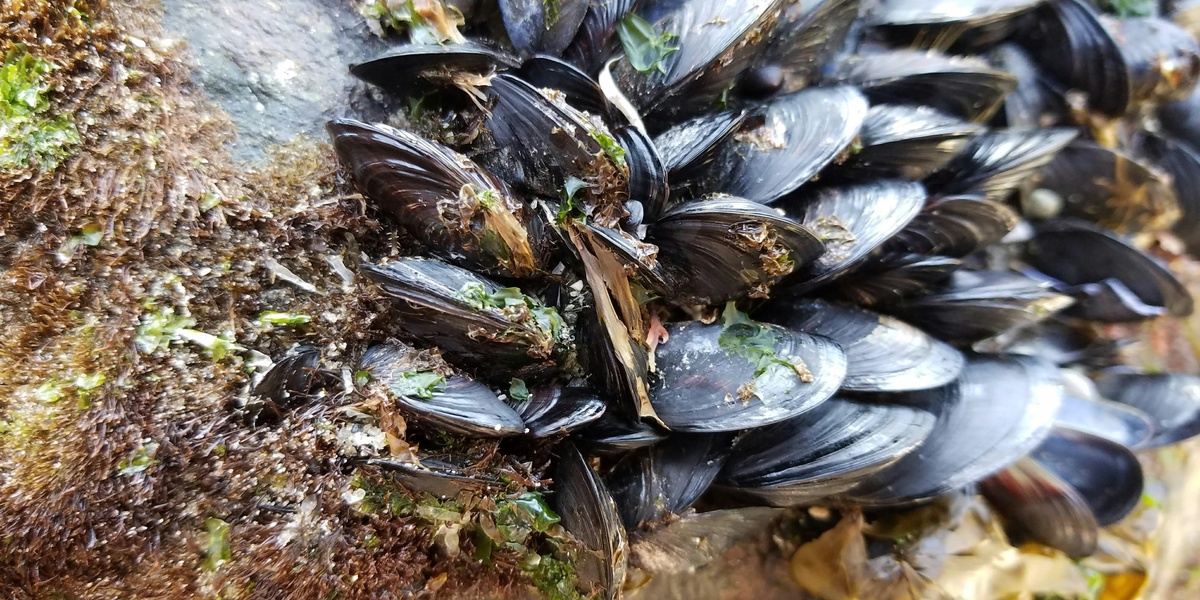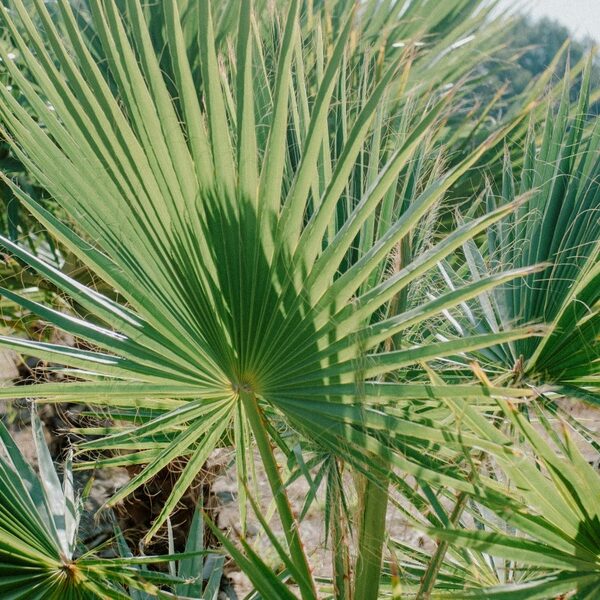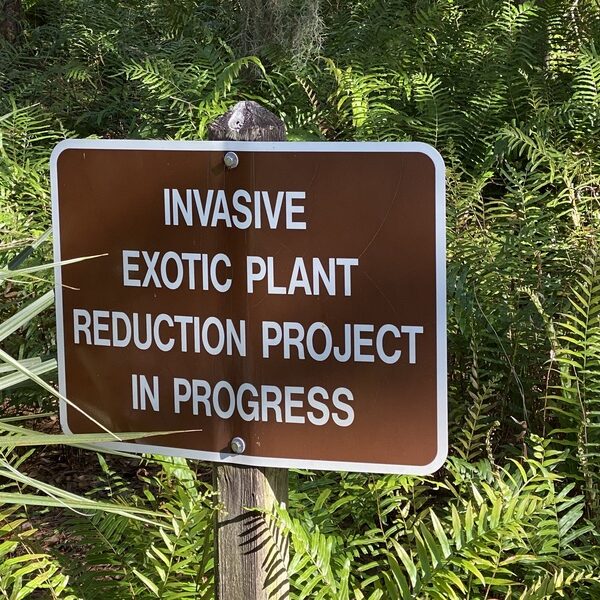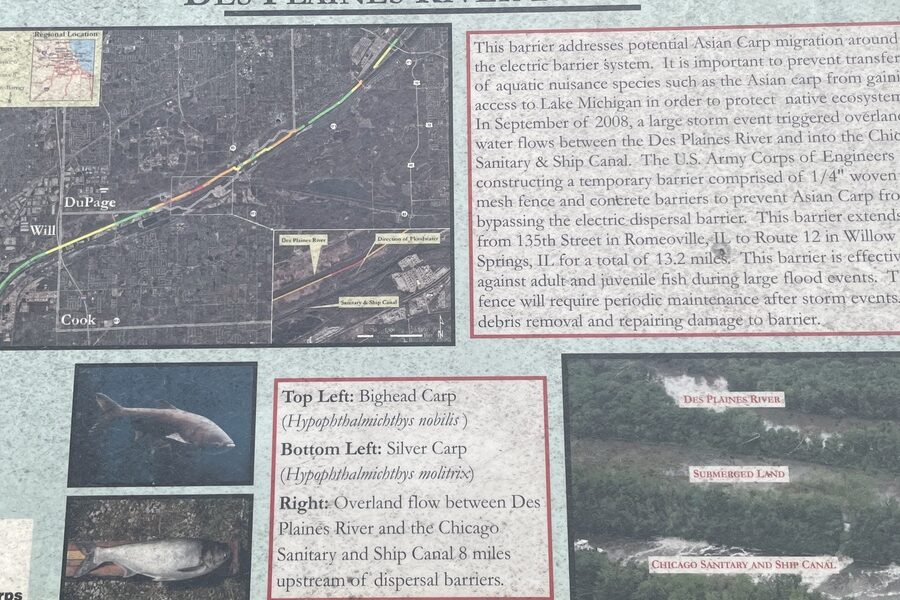Buffalo’s unique location, nestled between the Great Lakes and various natural habitats, makes it a vibrant ecosystem, but also one vulnerable to change. Understanding the non-native species that threaten its delicate balance is crucial for local conservation efforts and maintaining biodiversity within its waterways and green spaces.
On this list, you’ll find 28 Invasive Species in Buffalo, ranging from the subtle Alewife to the pervasive Zebra Mussel, each posing a distinct threat. To provide a clear overview, we’ve organized the data for each by Scientific Name, Type, Origin, and Primary Impact, all detailed below.
Why are invasive species a problem for Buffalo’s ecosystem?
Invasive species disrupt native ecosystems by outcompeting local flora and fauna for resources, altering habitats, and sometimes introducing diseases. In Buffalo, this can impact everything from the health of the Great Lakes and local waterways to the biodiversity of its parks and green spaces, affecting fishing, recreation, and overall ecological stability.
What can be done to help manage invasive species in Buffalo?
Managing invasive species often involves a multi-pronged approach, including early detection, rapid response, and long-term control measures. Individuals can contribute by learning to identify local invaders, not transporting firewood, cleaning boats thoroughly, and supporting local conservation initiatives and volunteer efforts focused on invasive species removal and prevention.
Invasive Species in Buffalo
| Common Name | Scientific Name | Type | Origin | Primary Impact |
|---|---|---|---|---|
| Garlic Mustard | Alliaria petiolata | Plant | Europe | Releases chemicals that harm native plants and fungi, creating dense, sterile understories. |
| Japanese Knotweed | Reynoutria japonica | Plant | Eastern Asia | Forms dense thickets that crowd out all native vegetation and can damage infrastructure like foundations. |
| Emerald Ash Borer | Agrilus planipennis | Insect | Eastern Asia | Kills virtually all native ash trees, devastating urban and forest canopies. |
| Zebra Mussel | Dreissena polymorpha | Mollusk | Eurasia (Caspian Sea region) | Clogs water intake pipes, damages boat motors, and alters aquatic food webs by filter-feeding. |
| Spotted Lanternfly | Lycorma delicatula | Insect | China, India, Vietnam | Damages over 70 plant species, including grapes and hops, by feeding on sap. |
| Round Goby | Neogobius melanostomus | Fish | Eurasia (Black and Caspian Seas) | Outcompetes native bottom-dwelling fish for food and habitat, and eats their eggs. |
| Giant Hogweed | Heracleum mantegazzianum | Plant | Caucasus Mountain region | Its sap causes severe skin burns and blistering when exposed to sunlight. |
| Tree-of-Heaven | Ailanthus altissima | Plant | China | Grows aggressively, releases toxins that kill nearby plants, and is the preferred host for the Spotted Lanternfly. |
| Purple Loosestrife | Lythrum salicaria | Plant | Europe, Asia | Invades wetlands, forming dense stands that eliminate native plants crucial for wildlife. |
| Common Reed (Phragmites) | Phragmites australis | Plant | Eurasia | Forms massive, dense stands in wetlands and roadsides, crowding out native plants and creating fire hazards. |
| Quagga Mussel | Dreissena rostriformis bugensis | Mollusk | Ukraine (Dnieper River) | Similar to zebra mussels, it clogs pipes but can also colonize soft surfaces and deeper waters. |
| Sea Lamprey | Petromyzon marinus | Fish | Atlantic Ocean | A parasite that attaches to large fish like salmon and trout, draining their bodily fluids. |
| Spongy Moth | Lymantria dispar | Insect | Europe, Asia | Caterpillars defoliate hundreds of species of trees and shrubs, weakening and killing them. |
| Hemlock Woolly Adelgid | Adelges tsugae | Insect | Japan | Kills Eastern Hemlock trees by feeding on sap at the base of needles. |
| Common Buckthorn | Rhamnus cathartica | Plant | Eurasia | Creates dense shade, outcompetes native plants, and produces berries that are a poor food source for birds. |
| Amur Honeysuckle | Lonicera maackii | Plant | Eastern Asia | Forms dense thickets in forest understories that shade out native wildflowers and tree seedlings. |
| European Swallow-wort | Vincetoxicum nigrum & rossicum | Plant | Europe | Forms dense, tangled mats that smother native plants and is toxic to monarch butterfly caterpillars. |
| Water Chestnut | Trapa natans | Plant | Eurasia, Africa | Forms dense floating mats that block sunlight, kill submerged plants, and hinder boating and swimming. |
| Jumping Worms | Amynthas spp. | Earthworm | Eastern Asia | Drastically change soil structure, stripping nutrients from the topsoil and harming forest floor ecosystems. |
| Viburnum Leaf Beetle | Pyrrhalta viburni | Insect | Europe | Both larvae and adult beetles feed on the leaves of viburnum shrubs, often killing the plants. |
| Spiny Waterflea | Bythotrephes longimanus | Crustacean | Northern Europe, Asia | A tiny predator that eats native zooplankton, disrupting the aquatic food web for small fish. |
| Rusty Crayfish | Faxonius rusticus | Crustacean | USA (Ohio River Basin) | Displaces native crayfish, destroys aquatic plant beds, and eats fish eggs. |
| Alewife | Alosa pseudoharengus | Fish | Atlantic Ocean | Competes with native fish for food and can experience massive die-offs that litter beaches. |
| Common Carp | Cyprinus carpio | Fish | Asia | Degrades water quality by uprooting aquatic plants and stirring up bottom sediments. |
| Norway Maple | Acer platanoides | Plant | Europe | Shades out native wildflowers and tree seedlings with its dense canopy, creating a monoculture. |
| Beech Bark Disease | Neonectria faginata (fungus) | Fungus | Europe | Kills mature American Beech trees, a critical species in WNY forests. |
| Japanese Stiltgrass | Microstegium vimineum | Plant | Asia | Rapidly invades shaded forest floors and wetlands, displacing native herbaceous plants. |
| Curly-leaf Pondweed | Potamogeton crispus | Plant | Eurasia | Forms dense mats early in the season that inhibit native aquatic plants and interfere with recreation. |
Images and Descriptions
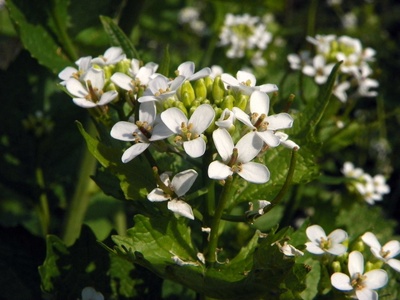
Garlic Mustard
A biennial herb found in forest understories. It has heart-shaped, toothed leaves that smell like garlic when crushed and produces small, white, four-petaled flowers in its second year.
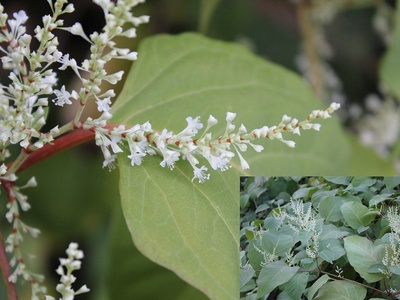
Japanese Knotweed
A bamboo-like perennial with hollow, jointed stems and broad, spade-shaped leaves. It grows incredibly fast and is extremely difficult to eradicate due to its extensive root system.
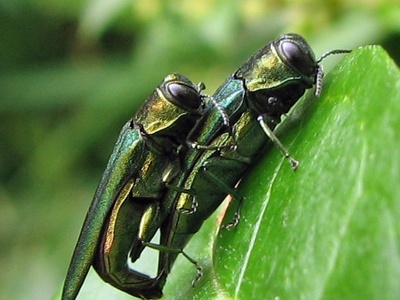
Emerald Ash Borer
A small, metallic green beetle whose larvae burrow under the bark of ash trees. This cuts off the tree’s flow of nutrients, killing it within a few years of infestation.
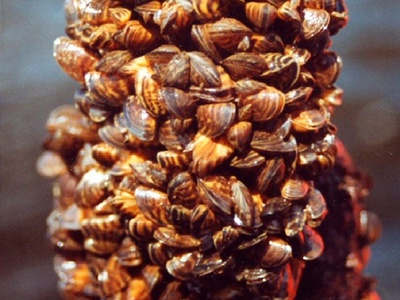
Zebra Mussel
A tiny, D-shaped mussel with alternating light and dark stripes. They attach to hard surfaces in dense colonies, filtering vast amounts of plankton from the water.
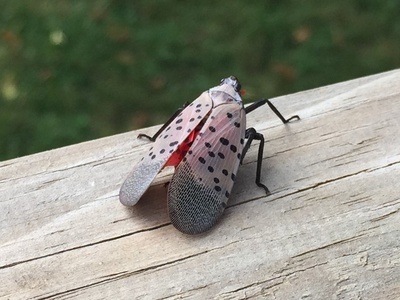
Spotted Lanternfly
A large, visually striking planthopper with black-spotted forewings and bright red hindwings. It excretes a sugary “honeydew” that promotes sooty mold growth, becoming a major nuisance.
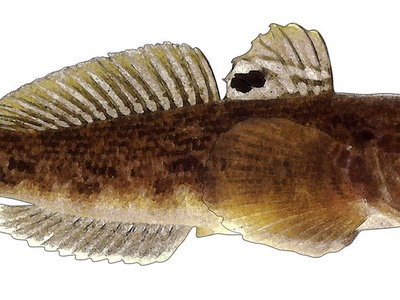
Round Goby
A small, mottled brown fish with a large head and a single, fused pelvic fin that looks like a suction cup. It is an aggressive predator, commonly found in Lake Erie and the Niagara River.
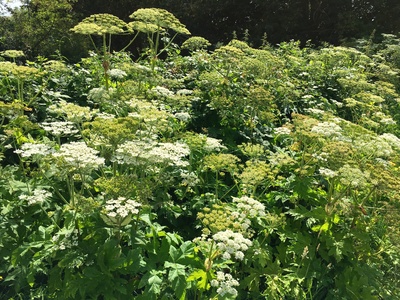
Giant Hogweed
A massive, towering plant that can reach 15 feet tall. It has a thick, hollow, purple-splotched stem, huge deeply lobed leaves, and large, umbrella-shaped clusters of white flowers.
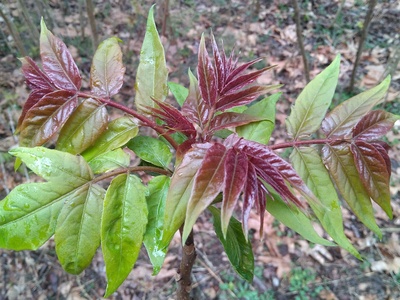
Tree-of-Heaven
A fast-growing tree with smooth, pale gray bark and large compound leaves. Its crushed leaves and twigs have a distinctive, unpleasant odor often compared to burnt peanut butter.
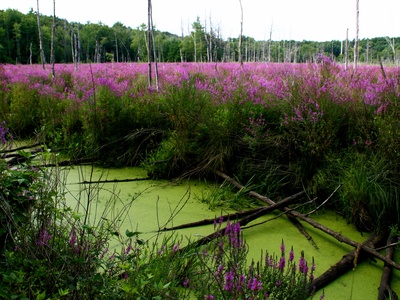
Purple Loosestrife
A perennial herb with a square stem that can grow up to six feet tall. It is easily recognized by its long, beautiful spikes of bright purple-magenta flowers that bloom all summer.
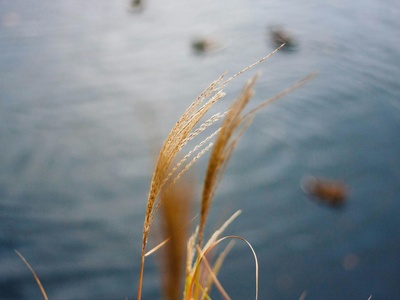
Common Reed (Phragmites)
A tall, perennial grass reaching heights of over 15 feet. It has feathery, plume-like seed heads that are typically purple or tan, and its dense growth blocks light for other species.
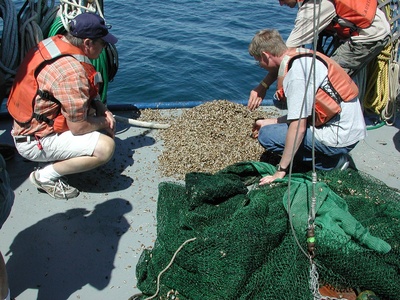
Quagga Mussel
Slightly larger and paler than the zebra mussel, with a rounded shell shape. It has now become the dominant invasive mussel in the lower Great Lakes, including Lake Erie.
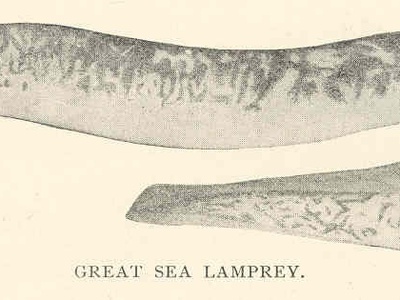
Sea Lamprey
An ancient, jawless, eel-like fish with a circular, suction-cup mouth filled with sharp, rasping teeth. They leave distinctive circular wounds on their host fish, often leading to death.
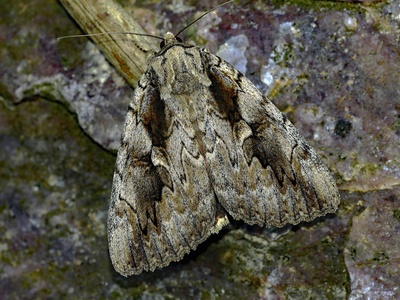
Spongy Moth
The caterpillars are hairy and dark, with five pairs of blue dots and six pairs of red dots on their backs. Adult males are brown moths, while females are larger, white, and flightless.
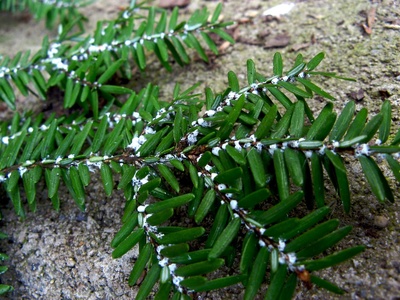
Hemlock Woolly Adelgid
A tiny insect that appears as small, white, cottony sacs on the underside of hemlock branches. Infestations lead to needle loss, branch dieback, and eventual tree death.
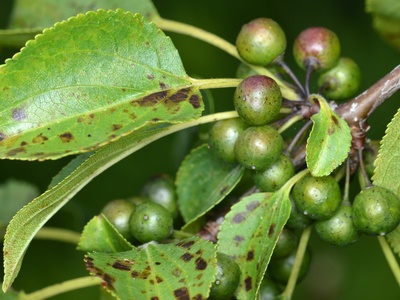
Common Buckthorn
A tall shrub or small tree with dark bark and thorny twigs. Its leaves stay green late into the fall, and it produces clusters of small, black, berry-like fruit.
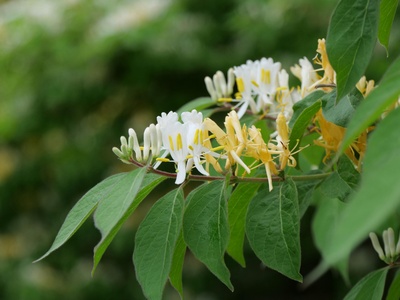
Amur Honeysuckle
A large, woody shrub that leafs out early in spring and holds its leaves late into fall. It has fragrant, white-to-yellow flowers and produces bright red berries along its stems.
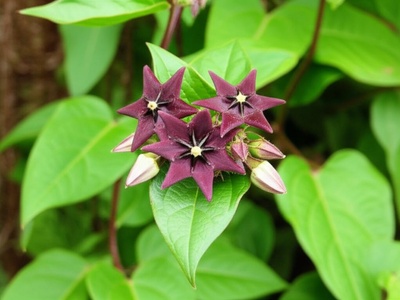
European Swallow-wort
A vine-like, perennial herb with glossy, dark green, oval-shaped leaves. It produces small, star-shaped flowers that are either dark purple (black swallow-wort) or pinkish (pale swallow-wort).
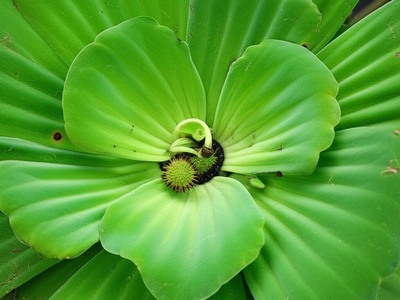
Water Chestnut
An aquatic plant with floating leaves arranged in a rosette. It produces a sharp, spiny nut-like fruit that can injure swimmers and is easily spread by waterfowl and boats.
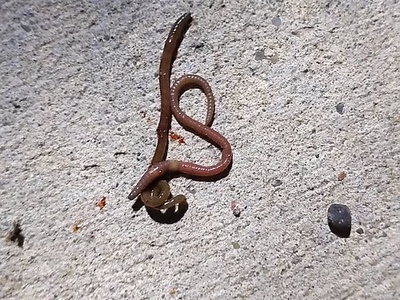
Jumping Worms
These worms are known for their frantic, snake-like thrashing when disturbed. They live in the surface soil and create a distinctive, coffee-ground-like casting that destroys soil health.
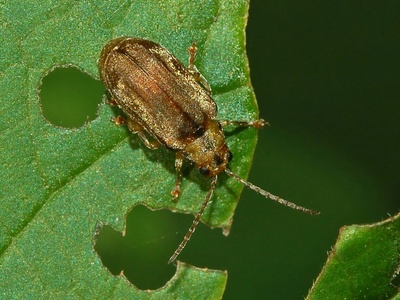
Viburnum Leaf Beetle
A small, brownish beetle that skeletonizes the leaves of viburnum plants, leaving only the veins. The damage is severe, making popular native and ornamental shrubs look tattered and weak.
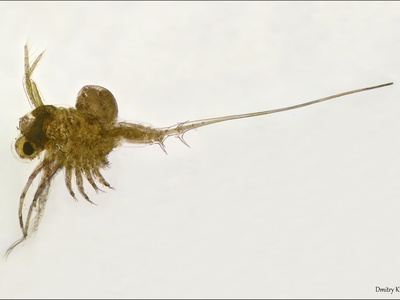
Spiny Waterflea
A microscopic crustacean with a very long, barbed tail spine. They foul fishing lines and gear, creating gummy clumps, and alter the base of the Great Lakes food web.
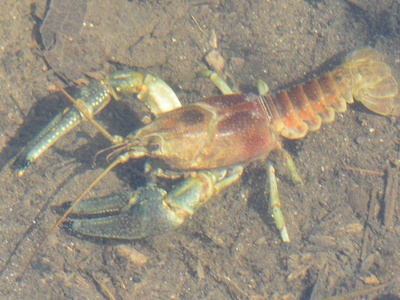
Rusty Crayfish
A large, aggressive crayfish, identifiable by two rust-colored spots on the sides of its carapace. Its large claws are smoother and more robust than those of native crayfish species.
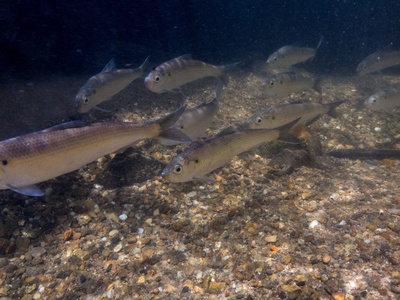
Alewife
A small, silvery herring-like fish that invaded the Great Lakes through canals. While they are now a key food source for salmon, their populations can fluctuate wildly, impacting the entire ecosystem.
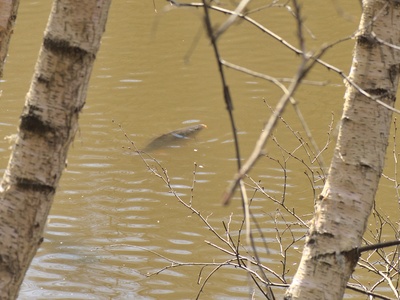
Common Carp
A large, heavy-bodied minnow with a distinctive barbel or “whisker” at each corner of its mouth. They are often found in disturbed or low-oxygen waters and are known for their hardiness.
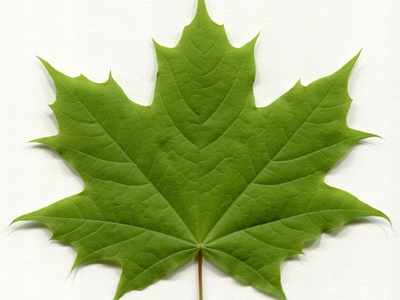
Norway Maple
A common landscape tree that has escaped into forests. It resembles a native sugar maple but has a milky sap in its leaf stems and broader, less-pointed leaves.

Beech Bark Disease
This disease is a complex involving a scale insect that creates wounds and a fungus that invades them. It appears as cankers, lesions, and snapped branches on beech trees.
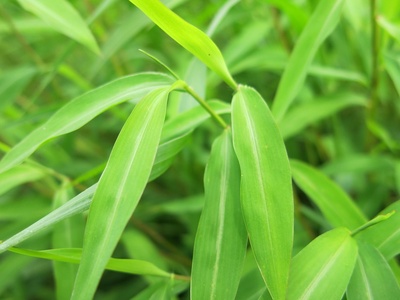
Japanese Stiltgrass
A sprawling, delicate-looking annual grass with a pale green color and a distinctive silvery stripe down the middle of each leaf blade. It forms dense carpets that are difficult to walk through.
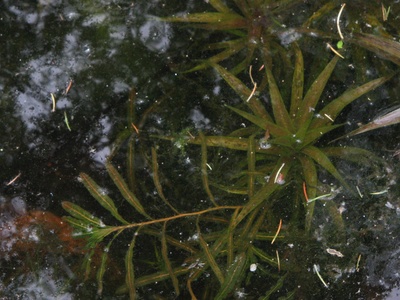
Curly-leaf Pondweed
A submerged aquatic plant with distinctive, lasagna-noodle-like leaves that have wavy, serrated edges. It often dies back mid-summer, leading to an increase in nutrient levels.
